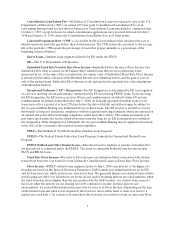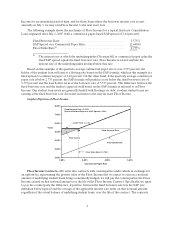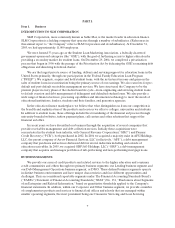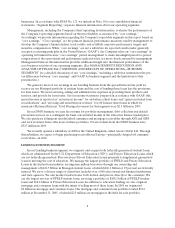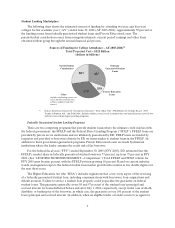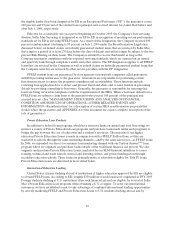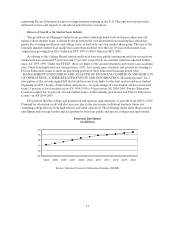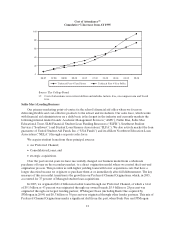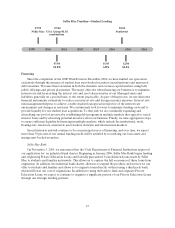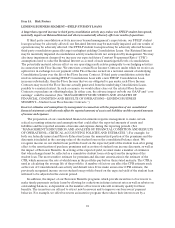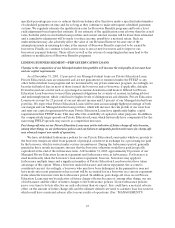Sallie Mae 2005 Annual Report Download - page 23
Download and view the complete annual report
Please find page 23 of the 2005 Sallie Mae annual report below. You can navigate through the pages in the report by either clicking on the pages listed below, or by using the keyword search tool below to find specific information within the annual report.13
Chase were the largest component of our Preferred Channel Originations, and reflects the changing nature
of our relationship with Bank One and JPMorgan Chase following their merger in 2004. In 2004, we
originated $6.9 billion or 38 percent of our Preferred Channel through Bank One and JPMorgan Chase.
On March 22, 2005, the Company announced that it extended both its JPMorgan Chase and Bank
One student loan and loan purchase commitments to August 31, 2010. This comprehensive agreement
provided for the dissolution of the joint venture between Chase and Sallie Mae that had been making
student loans under the Chase brand since 1996 and resolved a lawsuit filed by Chase on February 17,
2005.
JPMorgan Chase will continue to sell substantially all student loans to the Company (whether made
under the Chase or Bank One brand) that are originated or serviced on the Company’s platforms. In
addition, the agreement provides that substantially all Chase-branded education loans made for the July 1,
2005 to June 30, 2006 academic year (and future loans made to these borrowers) will be sold to the
Company, including certain loans that are not originated or serviced on Sallie Mae platforms.
This agreement permits JPMorgan Chase to compete with the Company in the student loan
marketplace and releases the Company from its commitment to market the Bank One and Chase brands
on campus.
Our Preferred Channel Originations growth has been fueled by both new business from schools
leaving the FDLP or other FFELP lending relationships, same school sales growth, and growth in the for-
profit sector. Since 1999, we have partnered with over 100 schools that have chosen to return to the FFELP
from the FDLP. Our FFELP originations at these schools totaled over $1.6 billion in 2005. In addition to
winning new schools, we have also forged broader relationships with many of our existing school clients.
Our FFELP and private originations at for-profit schools have grown faster than at traditional higher
education schools due to enrollment trends as well as our increased market share of lending to these
institutions.
Consolidation Loans
Over the past four years, we have seen a surge in consolidation activity as a result of historically low
interest rates. This growth has contributed to the changing composition of our student loan portfolio.
Consolidation Loans earn a lower yield than FFELP Stafford Loans due primarily to the Consolidation
Loan Rebate Fee. This negative impact is somewhat mitigated by the longer average life of Consolidation
Loans. We have made a substantial investment in consolidation marketing to protect our asset base and
grow our portfolio, including targeted direct mail campaigns and web-based initiatives for borrowers.
Weighing against this investment is a recent practice by which some FFELP lenders use the Direct Lending
program as a pass-through vehicle to circumvent the statutory prohibition on refinancing an existing
FFELP Consolidation Loan in cases where the borrower is not eligible to consolidate his or her loans. This
practice will be prohibited under the recently passed student loan Reauthorization Legislation. (See “Risk
Factors—LENDING BUSINESS SEGMENT—FFELP STUDENT LOANS.”) In 2005, these
developments resulted in a net Managed portfolio loss of $26 million from consolidation activity. During
2005, $17.1 billion of FFELP Stafford loans in our Managed loan portfolio consolidated either with us
($14.0 billion) or with other lenders ($3.1 billion). Consolidation Loans now represent over 73 percent of
our on-balance sheet federally guaranteed student loan portfolio and over 62 percent of our Managed
federally guaranteed portfolio.
Private Education Loans
The rising cost of education has led students and their parents to seek additional private credit sources
to finance their education. Private Education Loans are often packaged as supplemental or companion
products to FFELP loans and priced and underwritten competitively to provide additional value for our
school relationships. In certain situations, a for-profit school shares the borrower credit risk. Over the last


